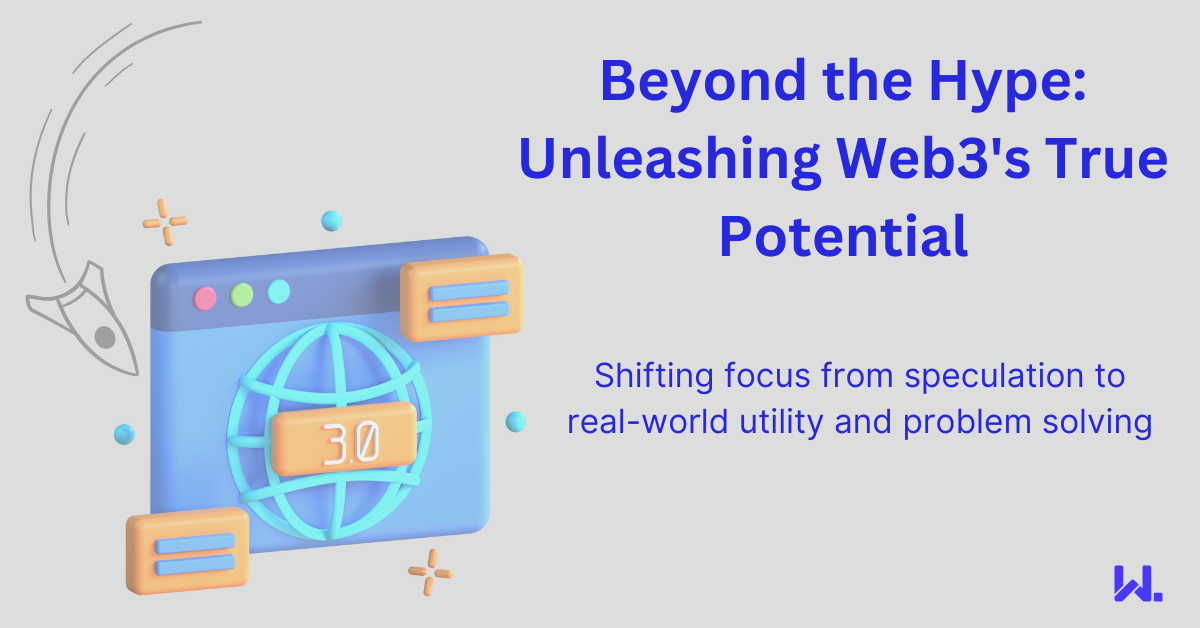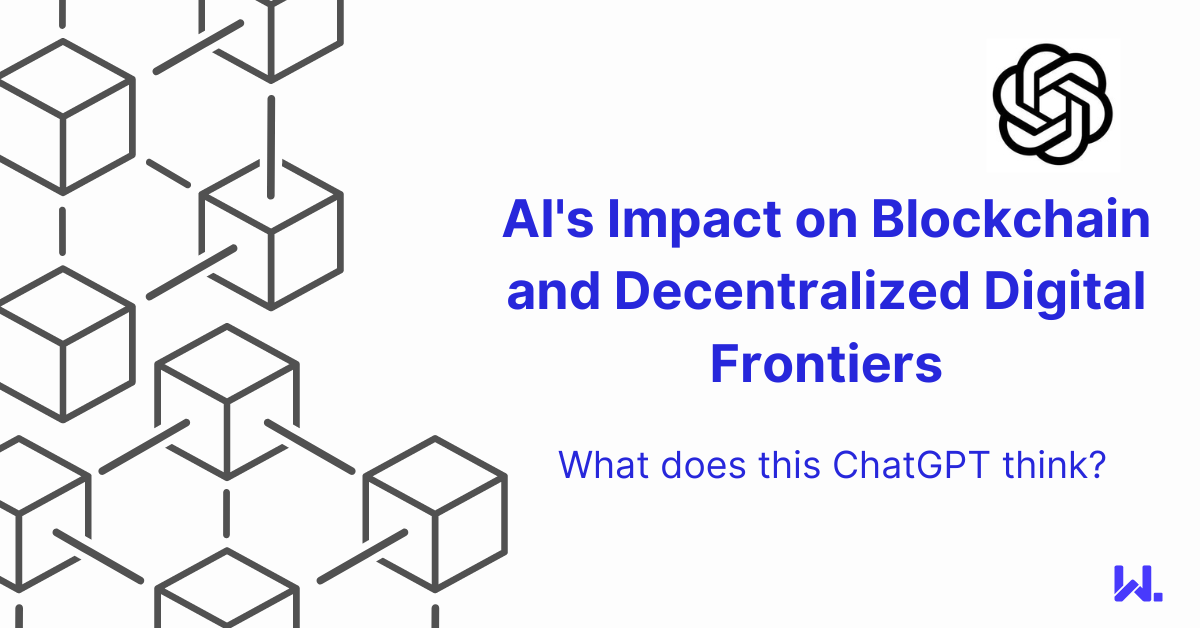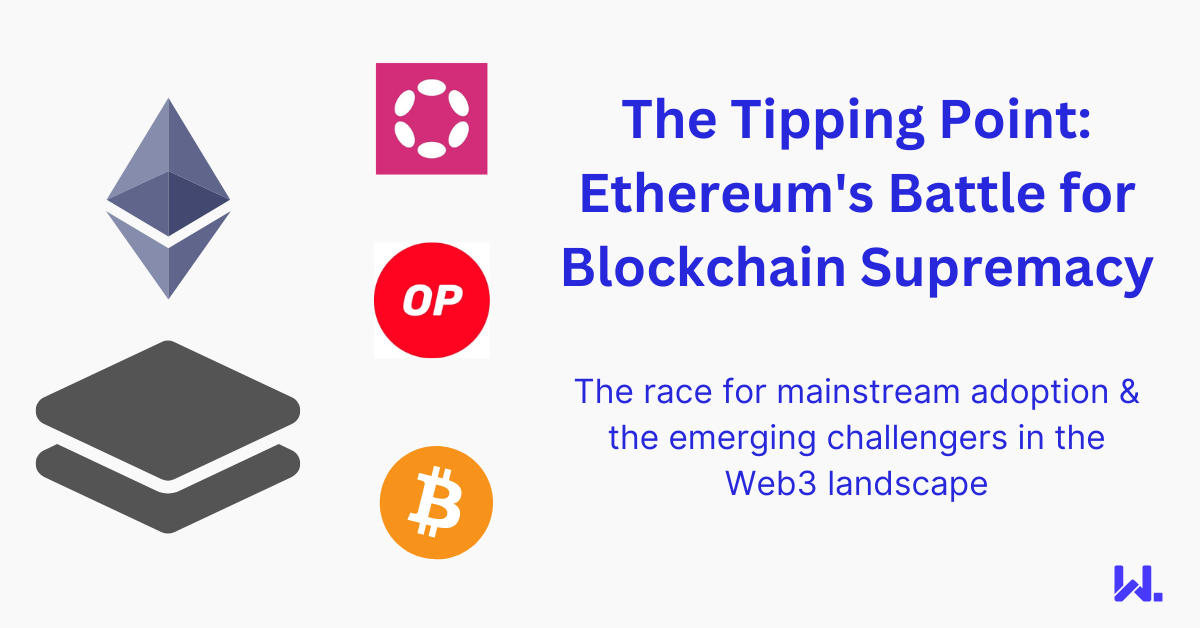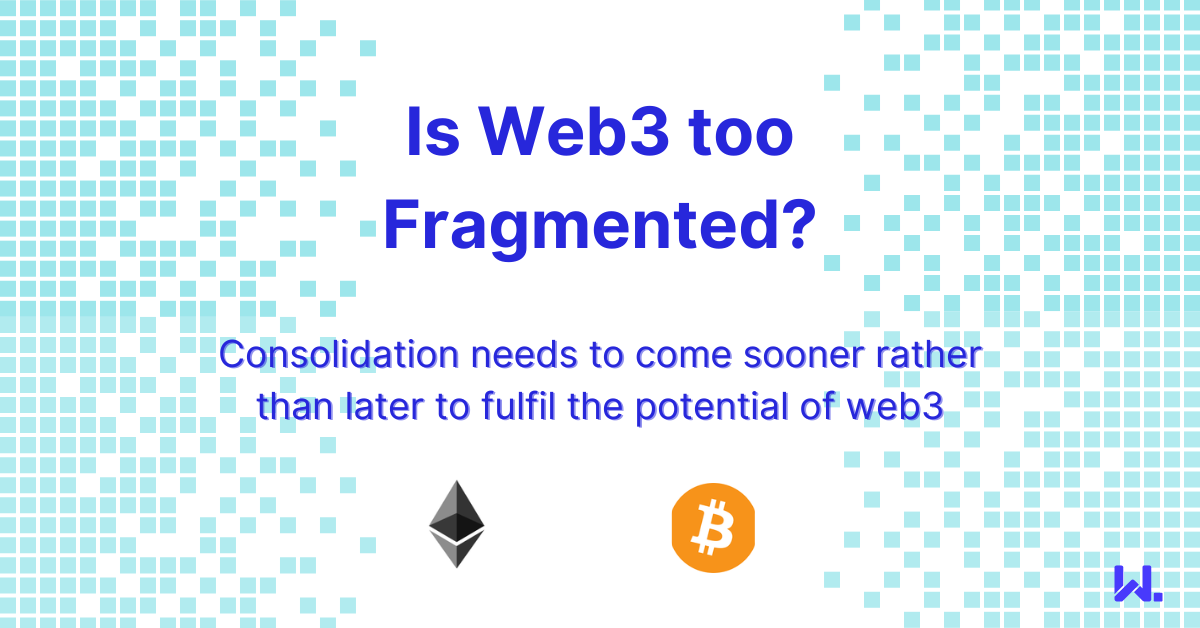Beyond the Hype: Unleashing Web3's True Potential
There's been speculation about the real-world utility of blockchain and web3 platforms for a long time, but it still has a long way to go. There is an ever-growing number of people #BUIDLing products and services using this technology, but outside of developers and speculators, we still don't have a majority user base who are interested in the utility of the technology over the speculative side of this.
Shifting focus from speculation to real-world utility and problem solving
We know that there are a plethora of potential applications for web3 technologies from self-sovereign identity to collectables, but if you take a web3 community at random right now, the chances are they're interested in seeing the price appreciation of some token or cryptocurrency. This isn't a bad thing per se, but it is reflective of where we are currently in the evolution of web3 — seeing some significant return on investment is still the primary use case.
Developers and technologists are generally attracted to web3 because there is so much that still needs to be built. The idea of greenfield development is what excites most developers — creating something new that solves a real problem.
But we need applications and projects being adopted at scale that do not contain a token-based incentive mechanism. Cryptocurrencies and tokens do serve some very real purposes, as a mechanism to secure decentralised networks they are essential, and it’s fair that those helping to secure these networks can see a return from providing this valuable service.
However, the majority of projects running on top of these networks should be focused on solving a real-world problem for people and disconnected from tokeneconomic effects. These tokeneconomic effects often take what starts off as a project with utility, such as a new decentralised messaging platform, and turn it into something that is akin to a multi-level marketing scheme. Where you have layers of promoters (token holders) whose primary interest is shilling a token.
Fortunately, things aren't as bad now as they were a year or so back, but the more we can move away from an obsession with tokens and the speculation premium , the better.
A real utility token
When someone hears the word "NFT" we want them to be thinking about a hotel room key, an event ticket, a digital trading card, not a crypto punk or Bored Ape. When we consider high transaction volumes on Ethereum's mainnet, we don't want it to be caused by NFT mints going crazy, we want it to be due to the volume of activity taking place on layer 2 networks. Where these activities are being driven by apps which again have real-world utility.
DeFi
The DeFi and crypto ecosystems do provide valuable services to those living in less stable monetary regimes. They give their citizens another choice which isn't a currency that hyper-inflates away. However, without being armed with the knowledge of the pros and cons of various networks and currencies, they could end up unintentionally holding the next UST. Even with this, the rewards still outweigh the risks for many.
Stablecoins are a great enabler for these regions, and USDT has established itself as a defacto currency for cross-border remittance payments across Asia and the Americas. Outside of the remittance use case, the leading stablecoins USDT and USDC are primarily used as trading stablecoins.
In trading stablecoins, their main utility is to facilitate the trading of crypto assets. It's far easier to trade out of a crypto position to a stablecoin such as USDC if you anticipate you'll be putting the funds back into crypto down the line. Whilst the payment utility is there for stablecoins held on exchange, stablecoins or cryptocurrencies for that matter are unlikely to be used for payments for the majority of users.
Although, where they could gain additional traction is where the size of the transfer is significant. For low-value payments, existing payment services offered by banks and fintechs such as PayPal suffice. If I wanted to send $1 million dollars to someone overseas, using USDC is likely to cost me less than using traditional payment rails, which is a potential opportunity. But these large payments are relatively infrequent if they take place at all for retail or small business users.
In TradFi ring-fenced, private-permissioned blockchain networks are still being embraced en-mass, especially in initiatives such as CDBCs and cross-border payments that service the wholesale markets. But these solutions are unlikely to be in service to public networks due to their permissionless nature.
Meme coins versus infrastructure
If we want web3 to go mainstream and be taken seriously, this association with price everywhere needs to subside. For anyone digging around in crypto or DeFi it's easy to attack the entire ecosystems when you have both Dogecoin and Shiba Inu making up $16 of the entire crypto market cap. How can an industry be taken seriously when meme coins that pump every time Elon Musk references a dog or bitcoin are the 8th and 14th largest cryptocurrencies by market cap. I like memes as much as the next person, but c'mon really?
I have great faith in the infrastructure that is being built out by projects, and so do leading technology investors such as a16z as they demonstrated in their 2023 State of Crypto Report. What I have less faith in is for web3 to reach its full potential whilst so many of its users are primarily focused on price. Even in layer 2 which forms a cornerstone of the future of Ethereum, projects are releasing their own tokens left, right and centre, which is encouraging a lot of token price appreciation where groups are rewarded handsomely if their layer 2 network gains greater traction than their competitors.
One does need to provide incentives to projects to build on their network, but we also need to get to a point where the base layer infra projects are stickier and properly established. With such stable bases where there isn't constantly a "better layer X" coming onboard, projects and companies will be willing to make greater investments in the technology on specific blockchain networks.
This will in turn strengthen the foundations upon which web3 is being built, and there will be fewer opportunities to spin up new competitive platforms with tokens due to the ever-increasing barriers to entry.
Once this price fever goes away, perhaps then web3 will be ready for its AI moment as Satya Nadella described which we've all been experiencing this year with ChatGPT.
This will be when those building will rejoice, as we'll have an ecosystem that is truly valuable in the sense of solving real world problems and providing genuine utility which is where anyone committed to web3 wants to get to.




